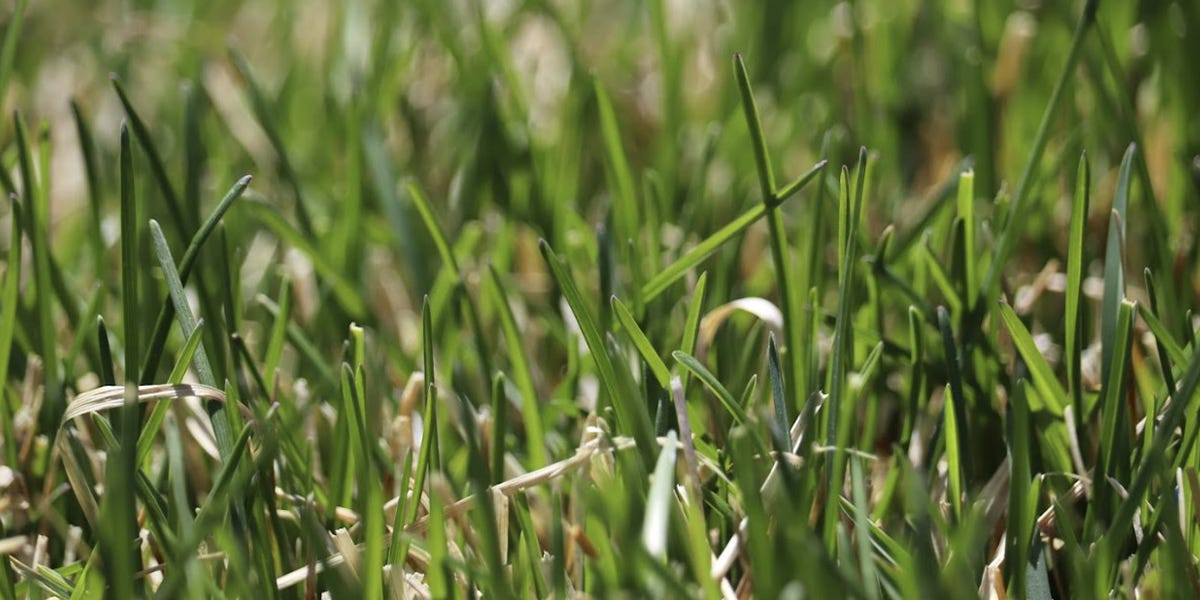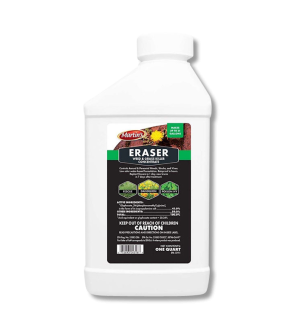Kentucky Bluegrass Control
Most Effective Products
Kentucky Bluegrass Control: How To Get Rid of Kentucky Bluegrass
This page is a general DIY guide for controlling Kentucky bluegrass. Using the products and methods suggested you get control of Kentucky bluegrass. Follow this DIY article and use the recommended products, and we guarantee 100% control of Kentucky bluegrass.
Kentucky bluegrass is a perennial, cool-season lawn grass. This means that it will come back year after year and grows most vigorously during the cool seasons of fall and spring. Kentucky bluegrass is found predominantly in northern climates where moderately warm summers and cold winters align with its natural preferences and growth cycle.
While Kentucky bluegrass has Kentucky in its name, this versatile and popular turfgrass was originally discovered in Europe and northern Asia. The grass was first introduced to the US as a pasture grass in states like Kentucky, hence why they earned their name. The grass is commonly known in by the initials KBG, and over the years has risen in popularity as an ideal grass type for residential and commercial landscapes because of its dark green color and beauty.
Even though it is a cool-season grass, KBG is versatile enough to thrive and survive in warmer conditions. Its not unusual to find Kentucky bluegrass growing in lawns in the West and Southwest parts of the country if they receive a lot of sun and the soil is exceptionally moist.
If you see Kentucky bluegrass on your lawn that you want gone, you can successfully remove KBG with the help of our DIY treatment guide. Our lawn care experts have compiled this guide to show you exactly what you need to remove Kentucky bluegrass from your lawn for good. Follow our step-by-step instructions below and use our recommended products to eliminate KBG quickly and affordably.
Identification

Before proceeding with a treatment program, you will need to be certain that you are dealing with a Kentucky bluegrass infestation. Careless identification can lead you to using the wrong treatment methods which can be a waste of time and money. Below are the following characteristics to know what Kentucky bluegrass looks like.
- Kentucky bluegrass is a cool-season grass with a pleasant dark green in color and has a dense, thick appearance that is quite beautiful, which is why many homeowners don't see it as a weed at all and prefer it to be their main grass type.
- The grass shares similar characteristics and seedheads of annual bluegrass. In order to tell the difference, you need to carefully observe how the leaf blade connects to the sheath. If there is a white ligule present it is annual bluegrass. If the ligule is not present, it is Kentucky bluegrass.
Use our description and image above to help you to identify Kentucky bluegrass on your lawn. If you are having trouble identifying your weed, contact us and we will properly ID the plant for you as well as give you product recommendations for control.
Inspection

Once confirmed that you are dealing with Kentucky bluegrass, you can then move on to inspection. During this phase, you will locate areas where Kentucky bluegrass is thriving and observe the conditions that are allowing it to thrive. This information will help you in knowing where to focus your herbicide application.
Where to Inspect
Kentucky bluegrass is a self-spreading, sod-forming grass. Once established, it spreads readily via underground stems (known as rhizomes) to form a dense, thick turf. This aggressive growth habit gives Kentucky bluegrass the capacity to recuperate quickly from damage.
Once you have gauged how big of a problem you have and where they are concentrated on your landscape, you can then equip yourself with herbicides and focus your application on those areas.
What To Look For
The grassy weed should be easy to spot when they have matured a bit because their seedheads often stand out and cause difficulty when mowing and create an uneven appearance that will mess with your lawns uniformity.
Treatment
Before chemical application, please make sure to equip yourself with personal protective equipment for your personal safety (Glasses, gloves and particle mask).
Post-emergent herbicides such as Eraser 41% Glyphosate will help to remove Kentucky bluegrass due to its non-selective formulation.
Keep in min that this will kill all vegetation it comes into contact with. To avoid unwanted drift you can place a barrier such as cardboard box between the weed and desired vegetation.
Step 1: Mix and Apply Eraser 41% Glyphosate
 Determine how much Eraser 41% Glyphosate to use by measuring the square footage of the treatment area. To do this, measure the length and width of the treatment area in feet then multiply them together.
Determine how much Eraser 41% Glyphosate to use by measuring the square footage of the treatment area. To do this, measure the length and width of the treatment area in feet then multiply them together.
For spot applications with Eraser 41% Glyphosate, use 2 1/2 oz. (5 tbs) of product in 1 gallon of water to treat an area approximately 300 sq. ft.
Mix and apply this product with a handheld pump sprayer.
Fill the sprayer tank with half the amount of water, add the measured amount of Eraser 41% Glyphosate, then pour in the remaining half of water. Close the tank lid and shake until evenly mixed.
Once mixed, spray the top and bottom of the weed leaves until wet, but not to the point of runoff.
Step 2: Reapply if Needed
 Kentucky bluegrass treated with Eraser 41% Glyphosate will die off within 2-4 days, but may take 1-2 weeks for complete death to occur.
Kentucky bluegrass treated with Eraser 41% Glyphosate will die off within 2-4 days, but may take 1-2 weeks for complete death to occur.
If you are still encountering this weed, then a second application can be done when 4 weeks have passed from the previous application.
Prevention

Once Kentucky bluegrass has been eliminated from your property, you will need to implement some preventative measures which will ensure that this weed does not return.
- Cultural practices that will hinder the redevelopment of this invasive grassy weed include changing your watering routine so the soil is not too wet and mowing your grass at a lower height because the grass likes to be mowed high. Make sure your selected grass type is getting the right nutrition via fertilizer as well.
Key Takeaways
What is Kentucky Bluegrass?
- Kentucky bluegrass is a popular cool-season grass that can take over where it's not wanted and once established it can be very hard to remove.
How to Get Rid of Kentucky Bluegrass
- We recommend either using a post-emergent treatment of Eraser 41% Glyphosate.
Preventing Kentucky Bluegrass Reinfestations
- To prevent a return of Kentucky bluegrass, practice cultural methods of control (water infrequently, mow grass low).












































































































































































































































































































































































































































































































































